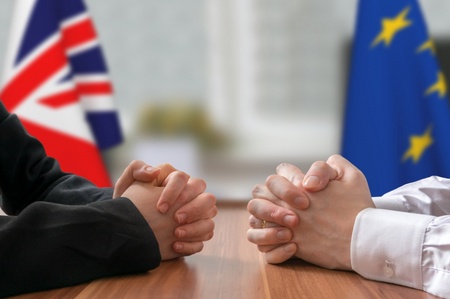In the past days British Prime Minister Theresa May has brought back to the country a draft agreement on Britain’s withdrawal from the European Union (the EU) as well as a short statement on the future trading relationship. This has sparked a “febrile atmosphere” at Westminster including waves of protests and resignations, with Mrs May responding with the plea that the deal reached involved “difficult choices” and is the “best that could be negotiated”.
So how do we understand what is happening here? Negotiation, if it is anything, is an exercise in pragmatism. By necessity it involves two or more parties who have a certain level of interdependence, or need to deal with one another, as well as interests that are, to some extent, competing. Sometimes this is straightforward: If you are a builder and I want a wall built in my garden, then we have a mutual interest as well as a competing interest: we both would like the wall to be built, but I would like to have that done for as little money as possible, and you have an interest in maximising your return. That may or may not result in some negotiation, but pragmatism dictates that we should both be willing to make some level of compromise in order to meet our mutual interests.
When it comes to Brexit things are not so simple. The UK and the EU 27 certainly have some mutual interests, for example in cross border trading, but there are a myriad of other interests and issues that form something of a jambalaya: a dish that can have many ingredients cooked in a multitude of varieties. The result is that what is known in negotiation parlance as the “issues mix” could result in many different outcomes as issues are traded off against each other. When one is acting for oneself in a negotiation one can decide what is most important to get, and decide to trade off that which is less important. Indeed, Mrs May claims to have done this. How? She claims that the deal meets the core points that “those who voted to leave” wanted to see, such as an end to free movement of people and to sending vast quantities of money to the EU.
The issue however is that, much like those who wish to remain, those who wish to leave do not speak with a common voice; in other words they value different things and have different expectations. The result for Mrs May is that she could never please all of the people all of the time. So this leads us back to pragmatism: she required to determine which issues were, across the group, the issues of most importance to most of the people, and seek to get these. The downside is that means other matters had to be compromised. This in a sense is the most difficult form of pragmatism: judging both the various interest groups, and their likely reactions. A difficult task indeed, especially when one’s every move is subject to adverse analysis and comment from all sides. Whether she has made the right judgements will be determined by what happens in the next days, weeks and months. But it would be fair to say that if she delivers Brexit on the deal she has brought back to the country, it would be hard to argue with the claim that she might just be one of the most pragmatic negotiators we have seen in recent political circles.


